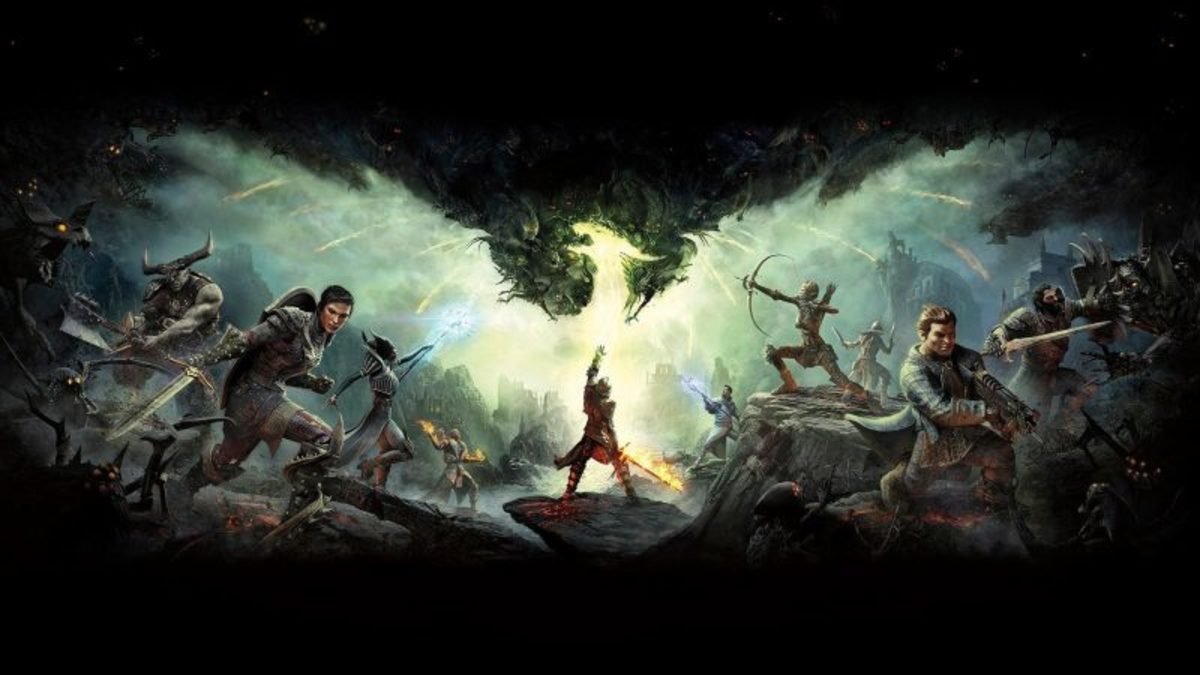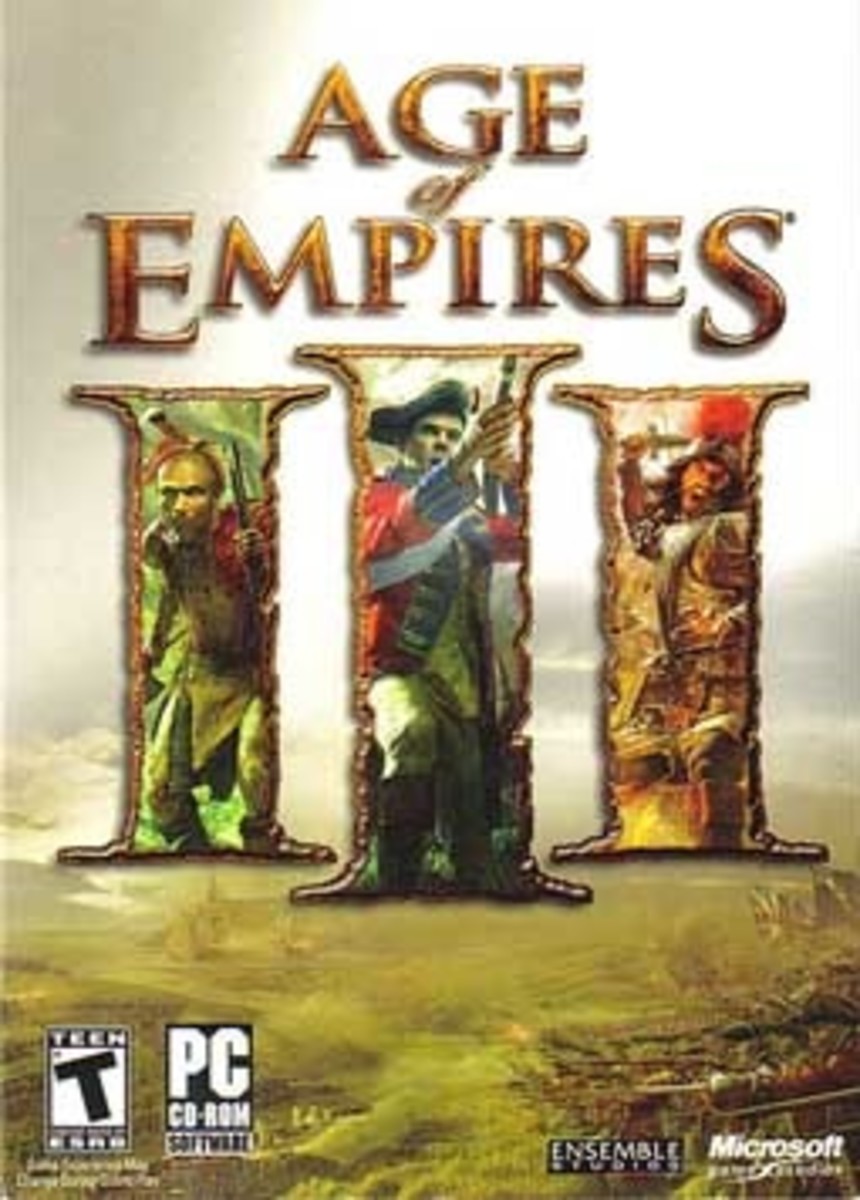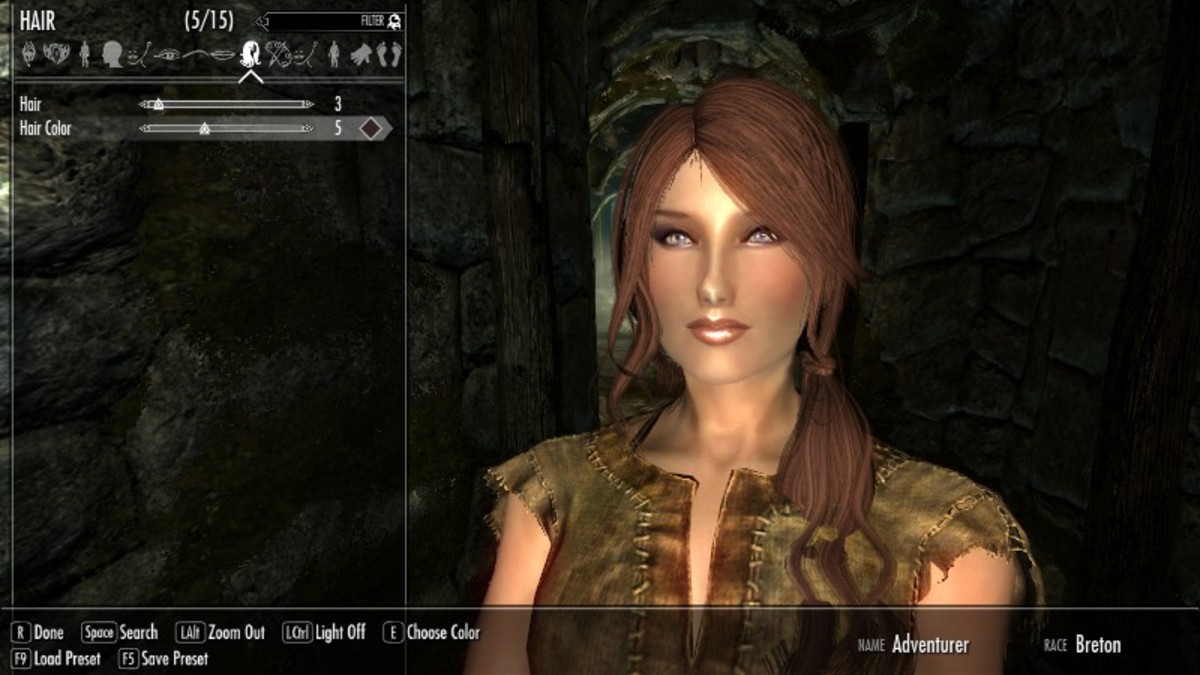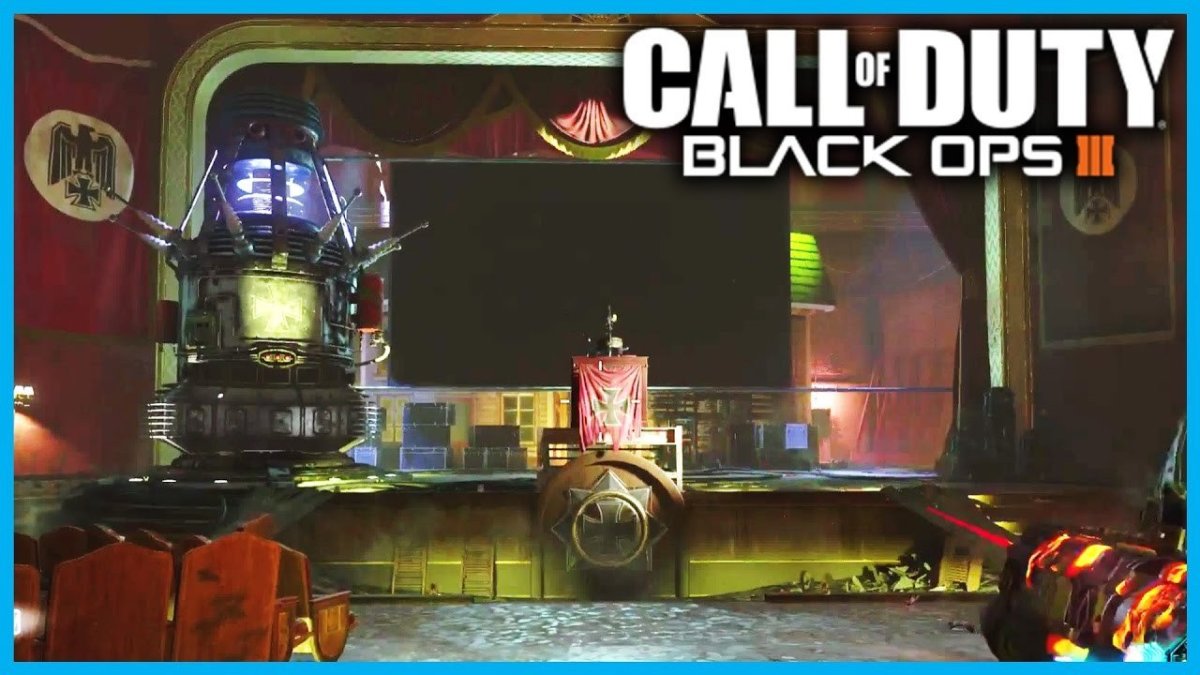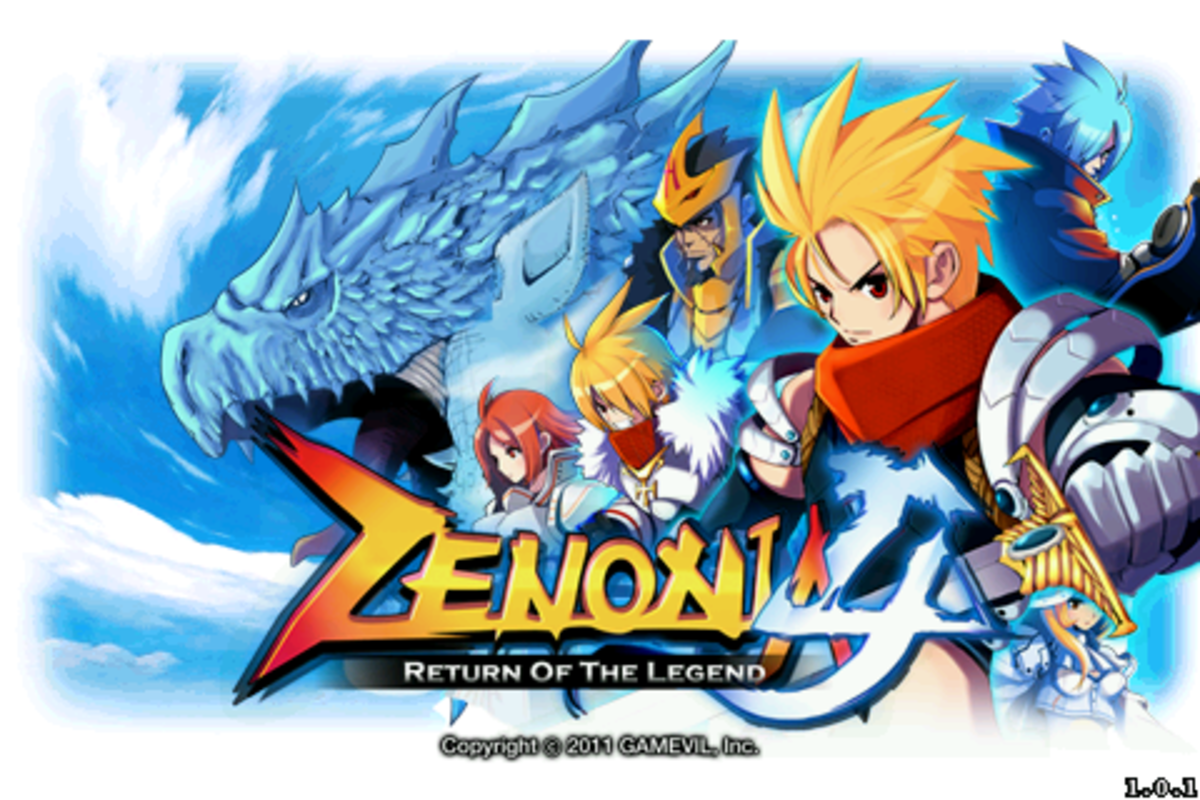Customization in FPS games
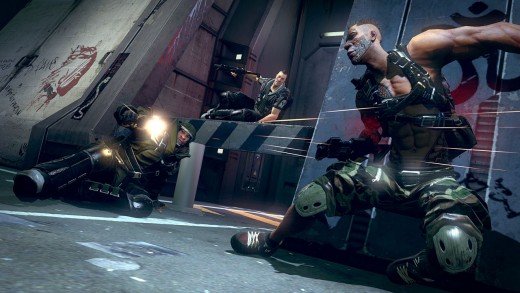
The recent multiplayer FPS Brink carried itself on a premise of parkour movement and appearance customization in addition to the typical versus formula.The new movement system caught my attention because it meant the game was attempting something different and innovative for the fps. The customizable appearance baffled me because, no matter how much time you spend making working on your character, you never actually see the character beyond the appearance screen.
"Upgrading" is not the same as "Customizing"
Once I started playing the Brink, the emphasis on appearance customization and clothing confused me even more when compared some of the other parts of the game, most notably the gun customization system. I admit I do not play too many gun based games, but each of the ones I can remember that claimed to possess gun customization (Metal Gear Solid 4, Army of Two, Splinter Cell Conviction, Fall Out: New Vegas, Deus Ex: Human Revolution) did not actually allow you to customize the guns. Instead, these games allow the player only to upgrade the gun to make it stronger and better without any penalty, despite certain absurdities. These upgrades only affect one aspect of the gun at a time, gradually and universally improving the gun without any balance to the sudden boost to the gun's performance. In Deus Ex: HR the explosive bullets for the magnum only enhances the gun, essentially turning the gun into a grenade launcher. But shouldn’t this absurd increase in the gun come with a balancing set back? In a physical sense, shouldn’t it alter the kickback and/or the rate of fire? Upgrades move in one, always positive direction. In Army of Two, adding a shield to a gun doesn't alter anything for the massive benefit it grants (admittedly though, Army of Two has the best of these, as some of the improvements do have negatives, but they're often so small it's hardly noticeable. Also, the link has the most annoying music, sorry). This leads the player into looking only for the best weapons and modifications available instead of manipulating weapons to better fit their own playing styles and tastes. I do not have a huge problem with upgrade system, though sometimes i feel they commonly break the game because it can quickly level up the weapons and outmatch opponents.
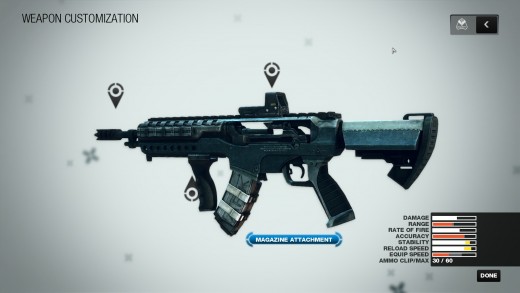
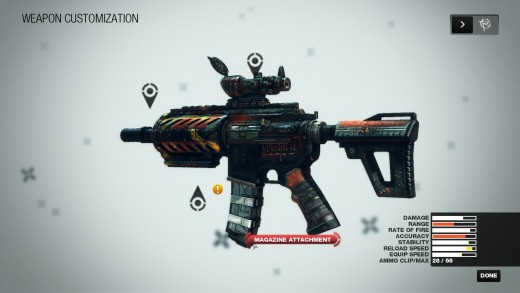
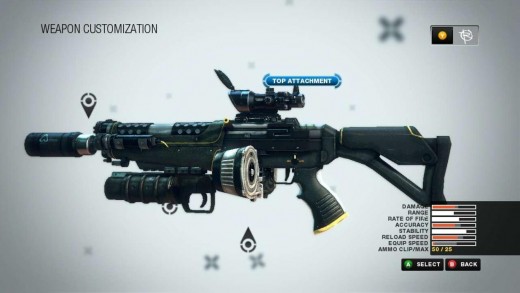
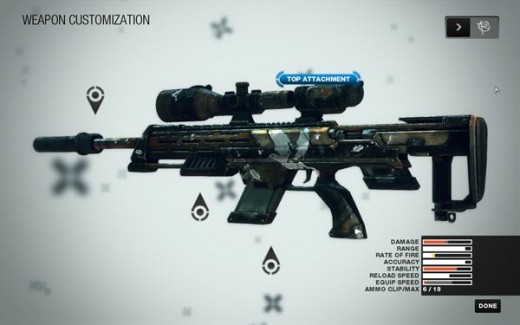
The Meticulousness of Customization
Brink, on the other hand, becomes more meticulous as you can switch out and add on specific parts to a gun. But adding something also causes a negative effect elsewhere, balancing the gun so that you cannot create the ultimate weapon and outmatch your opponents. For example: adding a larger ammo magazine to a gun lengthens the draw speed of the gun, adds time to reloading the gun and, in some instances, alters accuracy because of the added weight of the larger clips.
This means that there are tradeoffs for altering a gun’s standard parts and stats, causing the player to customize the gun to individual preferences. A player can maximize certain aspects of a gun to their liking but must accept playing with the loss on other aspects, like using the extra large ammo magazines means you won’t need reload nearly as often. Or you try to gain the benefits in one area and make up the loss with by switching other parts, overhauling a gun you like so that it becomes marginally better than before and allows you maximize your play style. The weight gained from the added scope can be lost by using smaller clips that also reload faster; since the scope adds more range to the gun, you won’t be in the thick of battle and the fewer rounds and more reloading does not quite impact you as much. Adding the grenade barrel to an assault rifle means the gun takes much longer to switch out for the side arm, but the gun essentially has a secondary weapon attached to it. Each of the add-ons are viable options, but might not affect the gun the way the player wants. These tradeoffs require the player to make decisions about what kind of weapons they want, thus choosing what they want for how they play. This way, even if two players use the same gun it does not mean that they chose the same parts and attachments.
I soon became more interested in customizing my guns as opposed to my appearance because the gun had a direct impact on gameplay. I spent a good amount of time toiling over the decisions of what parts would be necessary, what I could do without, and testing these guns to see if they worked the way I thought they would. I often forgot what my character looked liked until I actively looked at him on the main menu and reminded myself “oh yeah, that’s what I look like to everyone…”
if interested, these two videos show how detailed and involved Brink's gun customization can get. Also, it shows how differently two players approach the system and what they prefer. However, with so many options and variants, it can become overwhelming (as the videos show as well). This can become a problem as telling the difference between certain options blurs. Too many options and stats can bog down the actual gameplay.
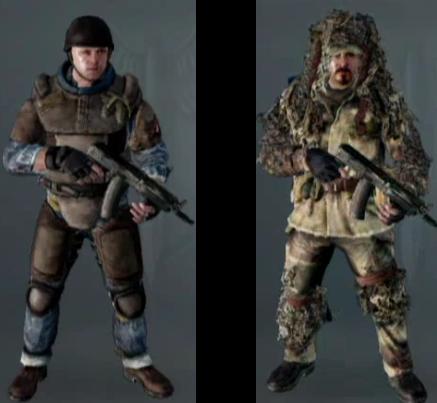
Why Does this Intricacy Not Roll Over to the Appearance?
One of the more common criticisms of Brink in reviews is that a there is no way to tell what role a character has by merely looking at them. Since Brink is a class based shooter, knowing what enemy characters can plant a bomb when you’re supposed to be defending a door could help a gameplay. Call of Duty: Black Ops does something similar. One of the perks in the character screen of Black Ops changes the appearance of your character. Choosing the Ghost perk allows the player to hide from radars. In addition, the Ghost character does not look (usually wearing a Gillie Suit) the same as a player with the Flak Jacket to reduce explosion damage. This allows both allies and enemies to notice some of the choices fellow players have made into their character. Sadly, Black Ops limits this physical representation of player builds only to one perk. It bothered me that I never knew an enemy used the Gas Mask perk until they ran through my gas grenade, unphased, and killed me. But when I see a character in Gillie Suit using a silenced AK-47, I know generally know his play style and some of the perks and weapon attachments he uses.
While not entirely capitalizing on the concept, Black Ops does well by making the appearance of your character matter beyond just wanting to look cool.This slight usage of player choice of abilities/skills combines well with a simplified gun customizing system to create a character that both plays and looks how the player wants.
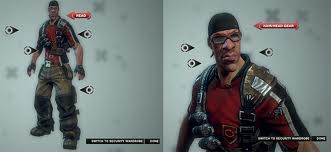
Brink, on the other hand, does not give a character’s physical appearance any gameplay relevance. I actually found this agitating, especially when comparing the customizable appearance to the gun customization.The few times I changed my character’s clothes, I wondered how hard it would be to create stats of that character that customize not just the appearance but also gameplay. Heavier clothes would obviously reduce the amount of damage, but a trade-off would be decreased movement (also would affect parkour moves, one of Brink’s staples). This could then remove the light, medium, and heavy builds as character weight is decided by the kinds of clothing and gear your character wears. It only makes sense that a guy in riot gear would be slower than a guy shirt and pants. It also makes sense that the riot gear could take more bullets than the shirt. Even certain trivial could matter in this, like pockets in the jacket could affect the number of grenades or extra ammo viable. While I am not a programmer, I can imagine the difficultly this idea could create and can understand why it was either cut or not implemented.
Perhaps this is too rpg-ish for action games, but I like seeing my decisions of character directly impacting gameplay. But I think the more options that a player has, the deeper and more personal the game experience becomes.I think this uniqueness of my decisions grows even more if it becomes represented physically. Not only does it tailor the character to your play style and decisions, but it also conveys information to the other players.

